Issue
- Perform a full system scan
- Enable Idle-state scanning
- Advanced scanning options
- Create a custom scan profile
Details
The default scan settings are configured to maximize your computer’s performance and security. However, some options are not enabled within the default profile in order to keep scan times low and prevent conflicts. You can enable these options to perform a more thorough scan of your system, or define scanning parameters for a specific use.
Solution
Perform a full system scan
The standard computer scan excludes some scan targets that are unlikely to contain malware. To configure your ESET product to perform a scan of your entire system, follow the steps below:
- Open the main program window of your ESET Windows product.
- Click Computer scan→ Advanced scans, and select Custom scan from the drop-down menu.
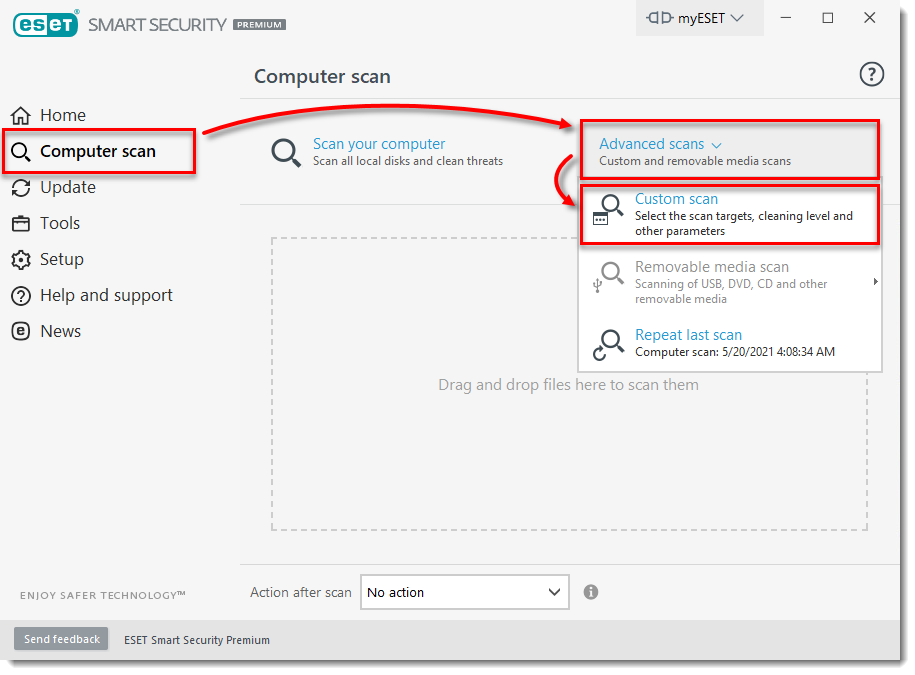
- Click the gear icon
 and select In-depth scan from the Scan profile drop-down menu.
and select In-depth scan from the Scan profile drop-down menu.
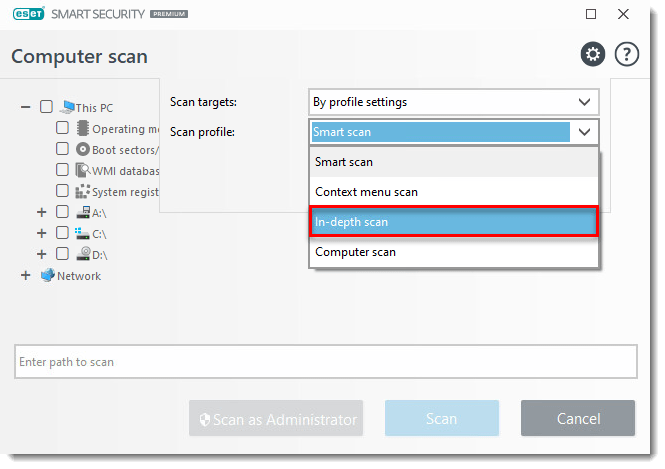
- Select the check box next to Computer or This PC (Windows XP users: select the check box next to My Computer) and then click Scan.
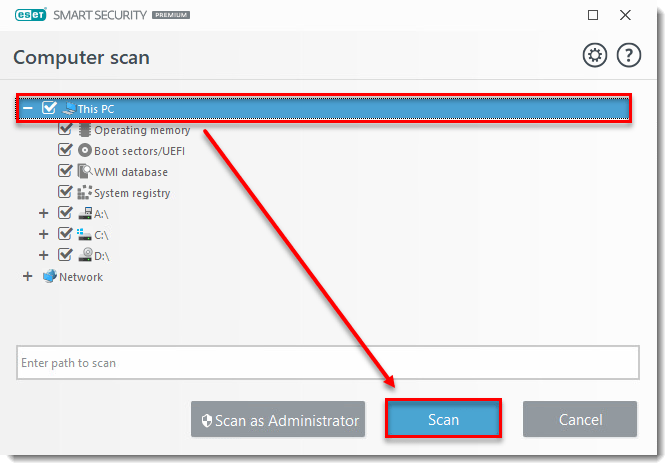
Enable Idle-state scanning
You can enable Idle-state scanning to trigger automatic computer scans at times when there is little or no load on system resources. To do so, follow the steps below:
- Open the main program window of your ESET Windows product.
- Press the F5 key to access Advanced setup.
- Click Detection Engine → Malware scans and then expand Idle-State Scan.
- Click the slider bar next to Enable Idle-state scanning.
- Click OK to save your changes and exit Advanced setup.

Advanced scanning options
The settings available in ThreatSense parameters allow you to define the types of files examined by the scanner, the methods used to examine files during scanning, and the default action to take if a threat is found during scanning. Follow the steps below to access ThreatSense parameters:
- Open the main program window of your ESET Windows product.
- Press the F5 key to access Advanced setup.
- Click Detection Engine → Malware scans.
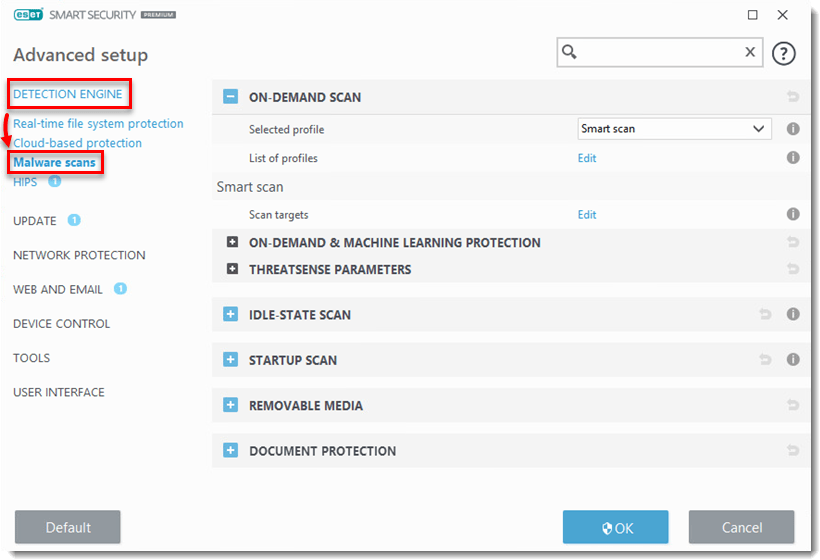
Basic
Selected profile: Scan profiles allow you to save a given scan configuration (scan targets, methods and other settings). You can use one of the pre-configured scan profiles included with ESET products (Smart scan, Context menu scan, In-depth scan or Computer scan). See below for descriptions of the pre-configured scan profiles:
- Smart scan: This is the default advanced scanning profile. The Smart scan profile uses Smart Optimization technology, which excludes files that were found to be clean in a previous scan and have not been modified since that scan. This allows for lower scan times with a minimal impact to system security.
- Context menu scan:You can start an on-demand scan of any file from the context menu. The Context menu scan profile allows you to define a scan configuration that will be used when you trigger the scan this way.
- In-depth scan: The In-depth scan profile does not use Smart optimization by default, so no files are excluded from scanning using this profile.
- Computer scan: This is the default profile used in the standard computer scan.
List of profiles: Click Edit to create custom profiles to fit your preference. Click here for instructions to create a custom profile.

Scan targets: Click Edit to select which local drives, system and network resources are examined by the scan. Click the gear icon ![]() to access the Scan targets drop-down menu to quickly select By profile settings, Removable media, Network drives, or Local drives.
to access the Scan targets drop-down menu to quickly select By profile settings, Removable media, Network drives, or Local drives.
ThreatSense Parameters
The ESET ThreatSense scanning engine can be configured to use your custom settings when performing an on-demand scan. Changes made here will not affect settings for other product modules (for example, if you disable removable media scanning here, it will remain active in Real-time file system protection). ThreatSense Parameters is divided into the following sections:
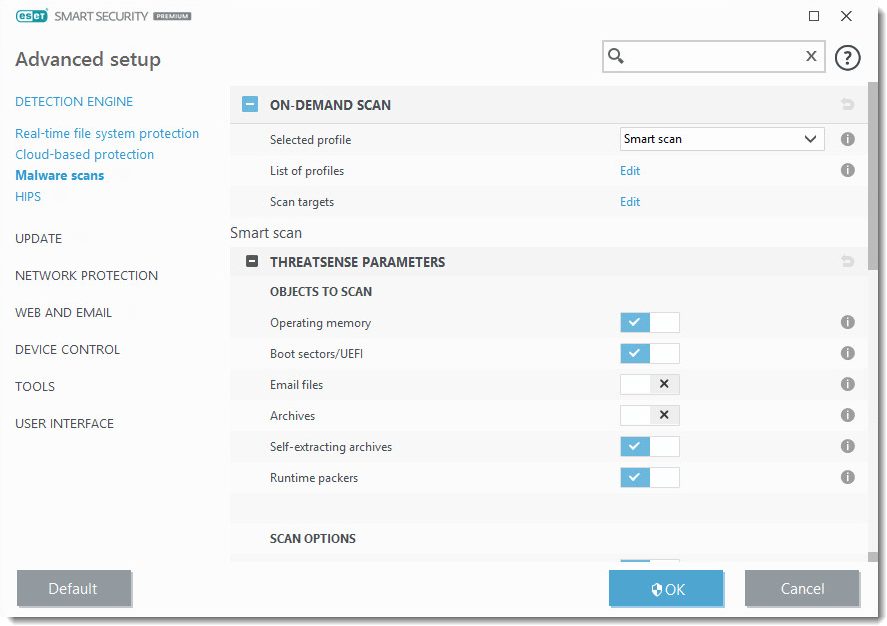
- Objects to scan: Allows you to select the types of objects examined by the scan. The object types available are Operating memory, Boot sectors, Email files, Archives, Self-extracting archives and Runtime packers. Using default settings, all objects except for Email files are scanned.
- Scan Options: Allows you to select the scanning methods/technologies used during scanning. Heuristics and Advanced heuristics/DNA/Smart signatures are the available options.
- Cleaning: Allows you to define the level of action taken when detections or potentially unwanted files are identified by the scan. Use the drop-down menu to select between Always remedy detection (Attempt to remediate the detection while cleaning objects without any end-user intervention), Remedy detection if safe, keep otherwise (Attempt to remediate the detection while cleaning objects without any end-user intervention, if a detection cannot be remediated, the reported object is left in its original location), Remedy detection if safe, ask otherwise (Attempt to remediate the detection while cleaning objects, if no action can be performed, the end-user receives an interactive alert and must select a remediation action) and Always ask the end-user (The end-user receives an interactive window while cleaning objects and must select a remediation action).
- Exclusions: Allows you to specify certain file types to exclude from scanning.
- Other: This section contains settings for miscellaneous technologies like alternate data stream scanning, Smart optimization, object logging during scans and more. We recommend that you use the default settings in this section.
Create a custom scan profile
- Open the main program window of your ESET Windows product.
- Press the F5 key to access Advanced setup.
- Click Detection Engine → Malware scans and then click Edit next to List of profiles.
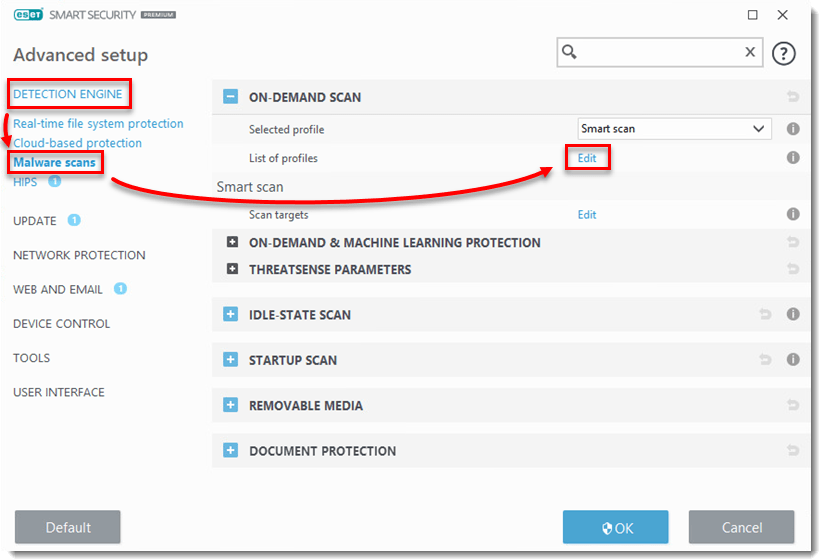
- Type the new profile name in the field and click Add. Click OK.
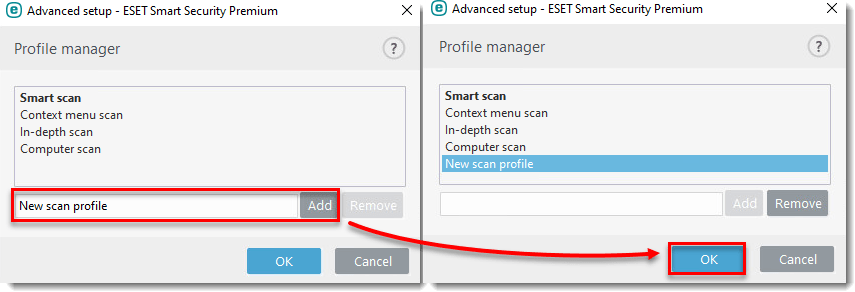
- Select your new profile in the Selected profile drop-down menu.
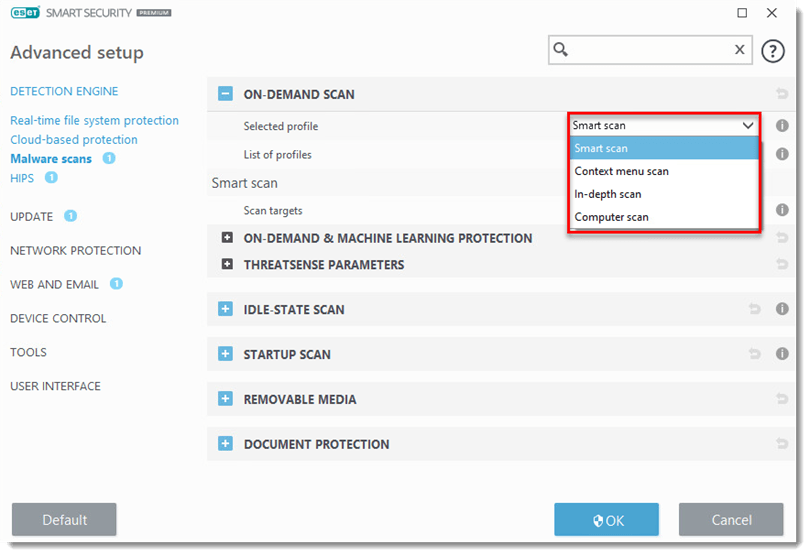
- Configure your profile as desired and click OK to exit Advanced setup.

